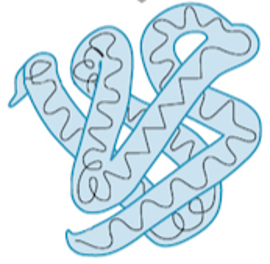Definition of Tertiary Structure
The 3-dimensional structure of a protein is termed as its tertiary structure. This structure is formed due to the interactions that are present between the alkyl groups of the amino acid residues that constitute the polypeptides and protein molecules. The interactions present among the molecules are of many types. Some of them are hydrogen bonding, dipole-dipole forces, London dispersion forces, ionic bonding, and hydrophobic interactions.
These hydrophobic interactions exist due to assembling together of the non-polar, hydrophobic alkyl groups of the amino acids on the inside whereas the hydrophilic, polar amino acids are exposed out to interact with the water molecules. Finally, the strongest bond that keeps the parts of the protein firmly attached to each other is disulphide bond and this occurs in the sulfur-containing amino acids e.g. cysteine.
View More Genetics Definitions
Related Questions of Tertiary Structure
An S-S bond between two cysteine amino acids on a
In general terms, what does the tertiary structure of a protein
In the tertiary structure of tRNA, where is the anticodon region
What are the weak interactions that maintain the tertiary structure of a
Show All


